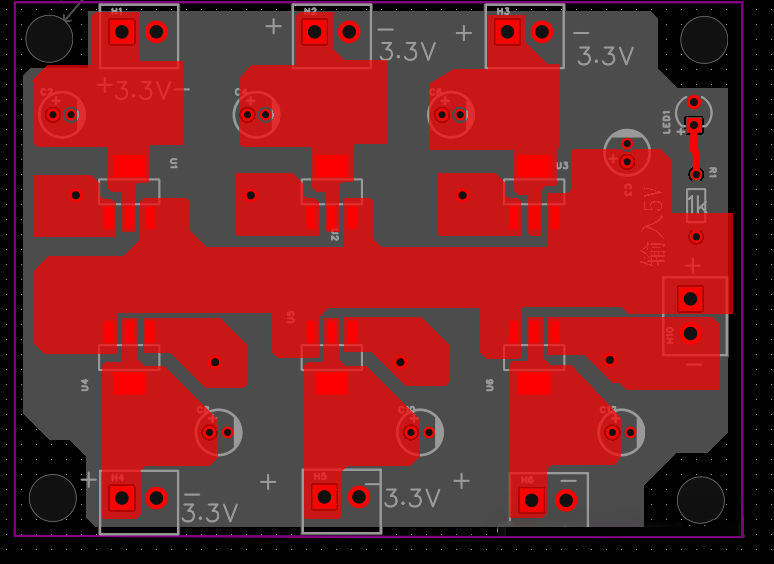The development of high-speed PCBs is primarily reflected in technological advancements, the expansion of application fields, and the continuous growth of market demand.
I. Technological Advancements
1. Innovations in Design and Manufacturing Techniques
Optimized Design: With the continuous progress of EDA (Electronic Design Automation) tools, PCB design has become more efficient and precise. Designers can utilize these tools for complex circuit layouts and routing to meet the requirements of high-speed signal transmission.
Manufacturing Processes: The manufacturing processes of high-speed PCBs are also constantly innovating, including finer circuit line production, more advanced lamination techniques, and more efficient drilling and plating processes. These process improvements enable PCBs to carry higher-density circuits and transmit signals at higher speeds.
2. Application of New Materials
High-speed PCBs typically use low-loss, high-frequency materials such as PTFE (Polytetrafluoroethylene) and the Rogers RO4000 series. These materials possess excellent electrical and mechanical properties, meeting the demands of high-speed signal transmission.
With advancements in materials science, new high-performance materials are constantly emerging, providing more options for the design and manufacturing of high-speed PCBs.
3. Considerations for Signal Integrity and Electromagnetic Compatibility
In high-speed PCB design, signal integrity and electromagnetic compatibility (EMC/EMI) are crucial considerations. Designers need to take a series of measures to ensure that signals are not interfered with or attenuated during transmission, while also ensuring that the PCB's electromagnetic radiation complies with relevant standards.
II.Expansion of Application Fields
High-speed PCBs are widely used in communications, computing, consumer electronics, automotive electronics, and other fields. With the rapid development of these fields and continuous technological advancements, the application scope of high-speed PCBs is also expanding.
1. Communications Field
High-speed PCBs play a significant role in communications equipment, such as base stations, switches, and routers. With the development of new generations of communication technologies like 5G and 6G, the demand for high-speed PCBs will continue to grow.
2. Computing Field
High-speed PCBs are also widely used in servers, workstations, personal computers, and other computing devices. With the rise of cloud computing, big data, and other technologies, the performance requirements for computing devices are increasingly high, driving the development of high-speed PCBs.
3. Consumer Electronics Field
With the popularity and performance enhancements of consumer electronic products such as smartphones, tablets, and wearable devices, the demand for high-speed PCBs is also increasing. Especially in smartphones, the application of high-speed PCBs enables devices to process data and transmit signals faster.
4. Automotive Electronics Field
Under the trend of automotive electrification and intelligence, the application of high-speed PCBs in areas such as ADAS (Advanced Driver Assistance Systems), in-car entertainment systems, and battery management systems is also increasing.
III.Continuous Growth of Market Demand
With continuous technological advancements and the expansion of application fields, the market demand for high-speed PCBs will continue to grow. According to market research predictions, the global high-speed PCB market will steadily grow in the coming years. This is mainly attributed to the following factors:
1. Driven by Emerging Technologies
The rapid development of emerging technologies such as 5G, IoT, and AI will drive the demand for related electronic products, thereby stimulating the development of the high-speed PCB market.
2. Upgrades of Electronic Products
As electronic products' upgrade speed accelerates, the demand for high-performance PCBs is also increasing. As indispensable key components in electronic products, high-speed PCBs will continue to experience growing market demand.
3. Driven by the Global Market
The rapid development and expanding market size of the global electronic information industry also provide vast development opportunities for the high-speed PCB market. Meanwhile, with the continuous optimization and integration of the global industrial chain, the production and supply of high-speed PCBs will become more convenient and efficient.
In summary, high-speed PCBs demonstrate a favorable development trend in technology, application, and market demand. In the future, with continuous technological advancements and expanding application fields, the high-speed PCB market will continue to maintain steady growth.





